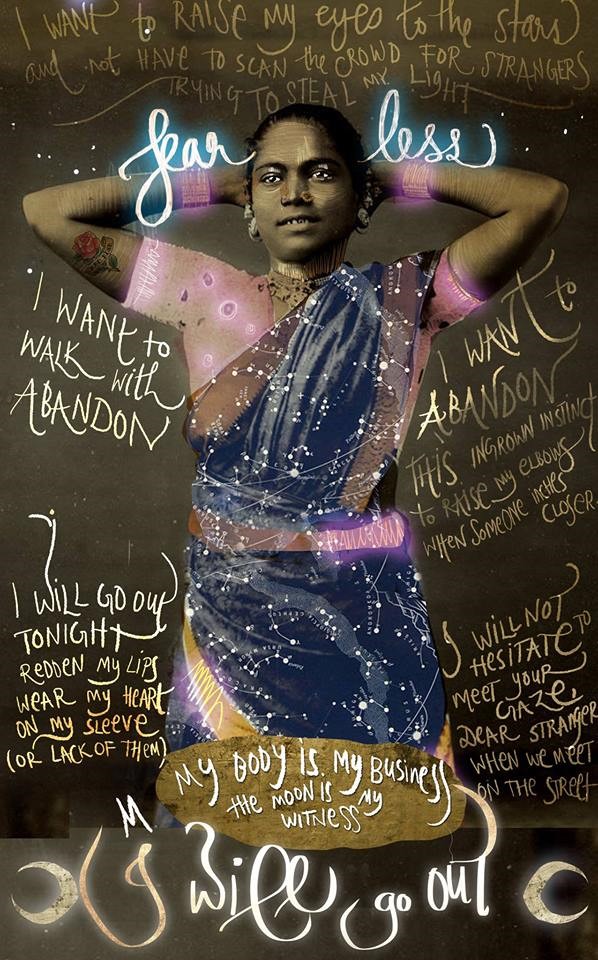
Once home to stray graffiti and innocuous sentences of love and heartbreak, the busiest New Delhi neighborhoods are seeing a rise in public street art, aimed at the general public for intellectual and interactive consumption. Independently, artists like Daku, Tyler, Ranjit Dahiya, Yantr, Lady Aiko, Axel Void and many others have been leaving their mark with fail-safe yet diverse thematic emblems — from Bollywood icons to mythological figures to political satire to redefined gender roles. St+Art, a leading enterprise for the cause with initiatives in Delhi, Hyderabad and Bangalore, describes its street art projects as a step towards building “an open air gallery accessible to everyone” as well as enabling “artists to listen to, and interpret the city by being agents of its transformation and creating conversations around local stories.”
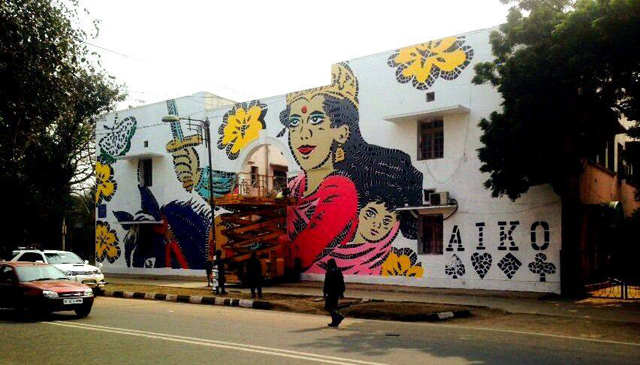
Street Art & Public Expression
With such a growing manifestation of expression in public spaces, the concerns of street art projects are invariably entering into the territory of critical cultural commentary, which up until now has been reserved for the likes of institutions, libraries, museums, schools, the press, etc. In the wide open, the discourse varies — from being as basic as encouraging maintenance of public property and sanitation to dealing with more complex accounts such as female empowerment and the reinterpretation of religious idolatry.
What is fascinating, then, is not just in the creative production of Indian street art which converses with Western contemporary art narratives, but in the mode of dissemination intended to be accessible to everyone. But while street art is targeted freely at the public, it seems public spaces are not.
“While street art is targeted freely at the public, it seems public spaces are not.”
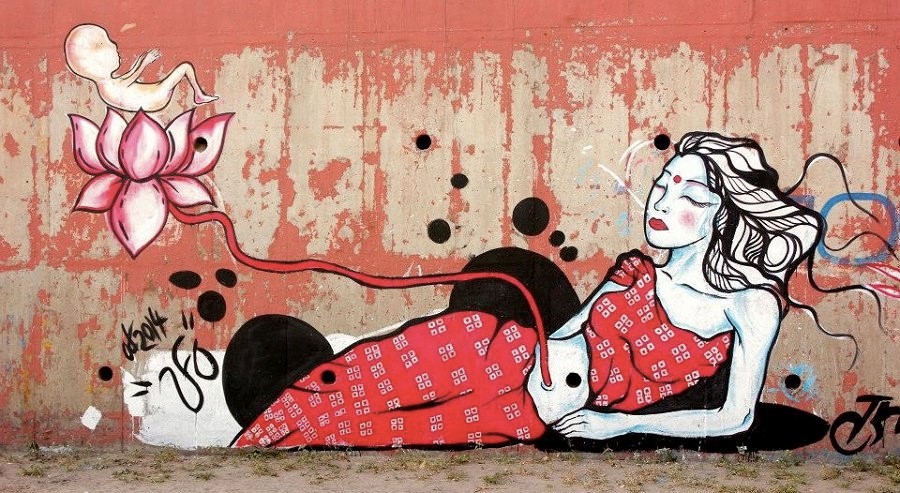
A peculiar feature of public spaces in India’s metropoles is an inordinate physical dominance of males, be it in parks, public toilets, markets, roads or public transport. Granted the sex ratio in India is inherently imbalanced for a number of socio-economic and cultural reasons. But given the recent upward trends to 940 females per 1000 males, one has to ask — where are all the women?
Researchers Shilpa Phadke, Sameera Khan and Shi Ranade set out to answer these questions in their book Why Loiter?, a study on the challenges and exclusions women across classes and communities face in the country’s vast outdoors. In light of an alarming number of incidents of female violence, eve-teasing, leching and rape, they find that keeping women safe in India has meant keeping them sheltered, i.e. indoors, instead of making public spaces generally safer.
Cultural Attitudes & Challenges For Women In Public Spaces
As they put it, cultural attitudes reveal: “Women are inevitably cast in the role of potential victims to be protected and the discourse becomes not about women’s right to the city, but about risk, fear and danger.” Moral policing is another crucial part of the equation keeping women from wandering or appearing aimless in public casting aspersions that they may be soliciting or are women of loose moral fiber.
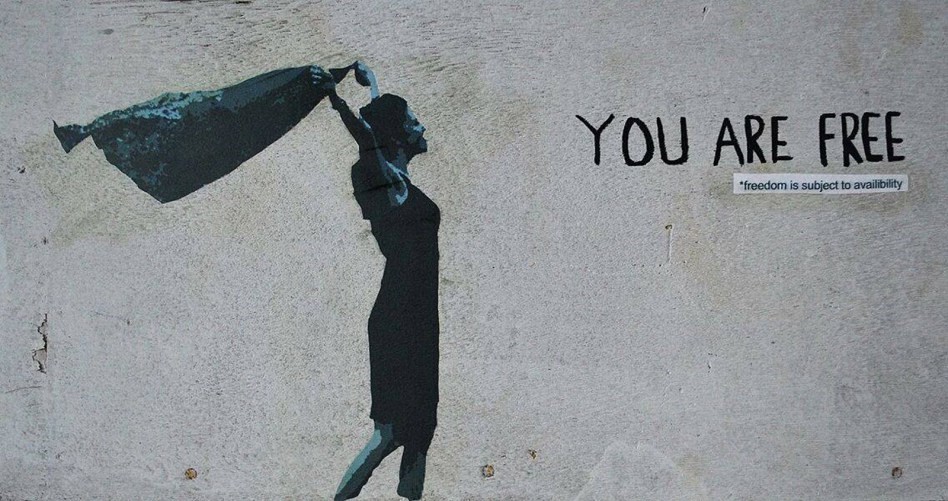
Thus, there is an ironic gap in the narrative of public art — once rebellious, now revolutionary — and the audience that consumes it. Phadke, Khan and Ranade argue that the general ability to loiter makes for a more inclusive citizenship, the denial of which disregards sections of society from social participation altogether. They state, “The exclusion of women from public spaces is inextricably linked to the exclusion and vilification of other marginal citizens.”
“Can street art make public spaces more inclusive to women and marginalized communities?”
So the question begs: can street art make public spaces more inclusive to women and marginalized communities as it sets out to achieve in its thematic objectives? The authors claim yes: “Design can make a difference in shaping accessible infrastructure and public space.”
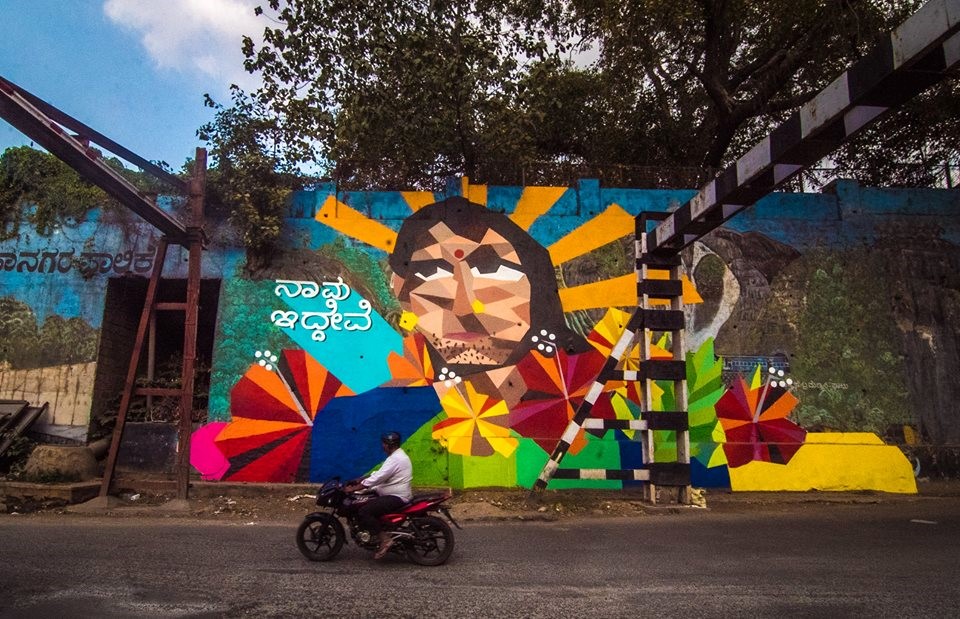
In saying so they are concerned with the functionalities of public amenities, but also the apparent friendliness and approachability of an area specifically for women, who choose to roam, say, residential paths over main roads, open spaces over enclosed alleys etc. The problem of accessibility arises because:
Usually, material environments in cities — which range in scale from large buildings to details such as fencing, paved footpaths, benches, lighting — are just considered a backdrop against which social drama is played out, or at best, a reflection of society as it is. The proactive role in producing social experience is rarely acknowledged. When it comes to the affective sense of safety or comfort in a particular space then, it is most often defined in terms of the people who occupy the space rather than a product of the particular attributes of the space itself.
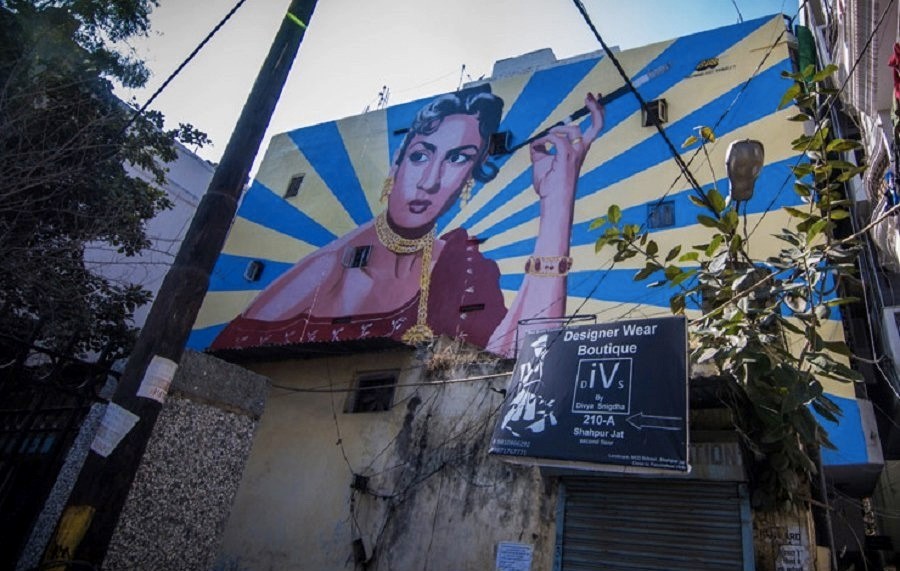
So aside from just beautification and promotional upkeep, in the diverse and progressive representations of women and other marginalized groups via long-lasting murals, mosaics and paintings, local community members are invited to interact with an influx of progressive thinking and modernity, and even contribute towards production and maintenance. One hopes that in doing so street art offers the promise of making public spaces more inviting to women and discouraging situations in which harassment occurs by treating public spaces as more than just links among private clusters of gated communities.
Moreover, an increasing number of street art projects suggests a sustained interest and curiosity among the numerous locales that make up city-labyrinths, as well as the government agencies that fund and support them. In a Hindustan Times article, founder of Delhi Street Art Yogesh Saini says, “A large part of the street art in Delhi and other metros is permission or invitation driven — which means it becomes more legitimate, has a possibly longer shelf life (as against being whitewashed or erased rapidly) and gets the full support of the city and local agencies.”
Initiatives in making public spaces inclusive and worthy of loitering are clearly in the pipeline and Nicolas Bourriad’s conceptions of relational art — which regard the audience at the center, the artist as the catalyst — clearly afoot.
Girls Just Wanna Have FUN-damental Rights
Further turning the national feminist voice on its head, the authors of Why Loiter? write, “It is time we claim not just the right to work, but also the right to play.” And very recently, the women in India did!
On January 21, 2017, the #IWillGoOut march, organized in outrage to yet another molestation scandal in Bangalore on New Year’s Eve last year, found women across the nation taking to the streets to protest for their rights to occupy public space both purposefully and aimlessly, to walk at night without fear, to dress and conduct themselves without voyeuristic disdain, to be treated as equal denizens of the cities in which they live.
Visit @FeminismInIndia ‘s Facebook to see how the #IWillGoOut campaign unfolded in #Delhi & make sure you keep demanding our #HumanRights! pic.twitter.com/KjqCFRdEI5
— Women In Need (@womeninneed) January 26, 2017
Indian women “occupy the night streets” to protest reported mass molestation https://t.co/lCdFgfVACD by @nitabhalla and Anuradha Nagaraj — Reuters India (@ReutersIndia) January 21, 2017
In a country where cleaning has been considered throwing trash out into the street, the focused development and restoration of public space is a huge endeavor. To reclaim “going out” is a process in continuation and not an event in isolation. Government — and community — funded local art projects redirect the institutional and public eye to areas of cities otherwise falling into disrepair out of lack of attention and awareness. People from different strata of society then flock to such areas to consume the cultural capital as well as the local narratives surrounding them.
More importantly, armed with weapons of mass social media, they share their experiences, shedding light on the social mores of these localities and in turn offering them up for public debate. This is not to say that the proliferation of street art can single-handedly position public spaces as accessible to all; there are a number of cultural, economic and environmental factors that must also be taken into consideration. But as Phadke, Khan and Ranade argue, “Space is not given, it is constructed.”
“Space is not given, it is constructed.” — Why Loiter?
In reconstructing public spaces by way of aesthetics and design, the hope is that the cultural mindsets that metaphysically inhabit these spaces will also undergo a shift, entering into a renewed natural contract that has been previously prohibitive to almost half the population. The breakdown of hierarchical and intellectual boundaries predicated on exclusivity through public art can throw open the cultural and social experience to all and sundry. This would offer all an opportunity to interact, interpret and participate with their surroundings — whether by cruising past these walls or loitering in front of them.
* * *
Dipti Anand is an author/writer and editor living and working in New Delhi, India. To connect with and read more of Dipti’s reverie and creative work, visit www.diptianand.com.
* * *
Additional images shared on Instagram by St+art India Foundation:
* * *












